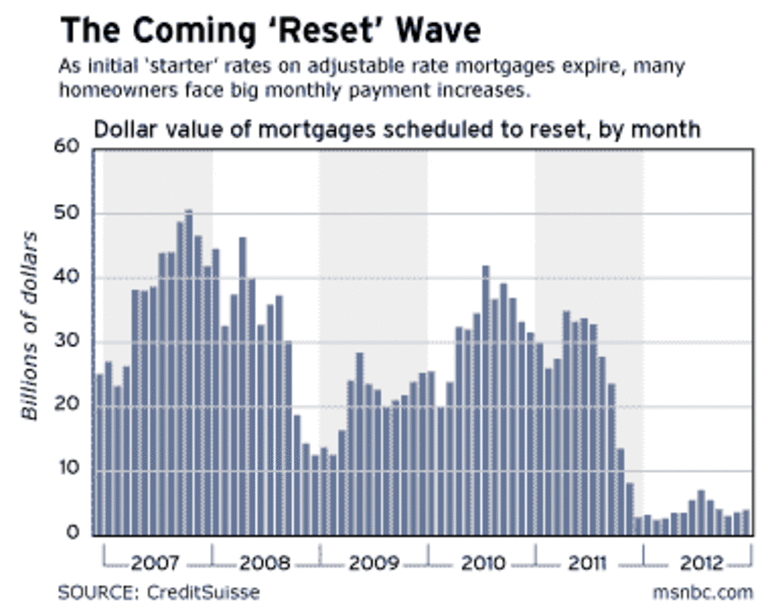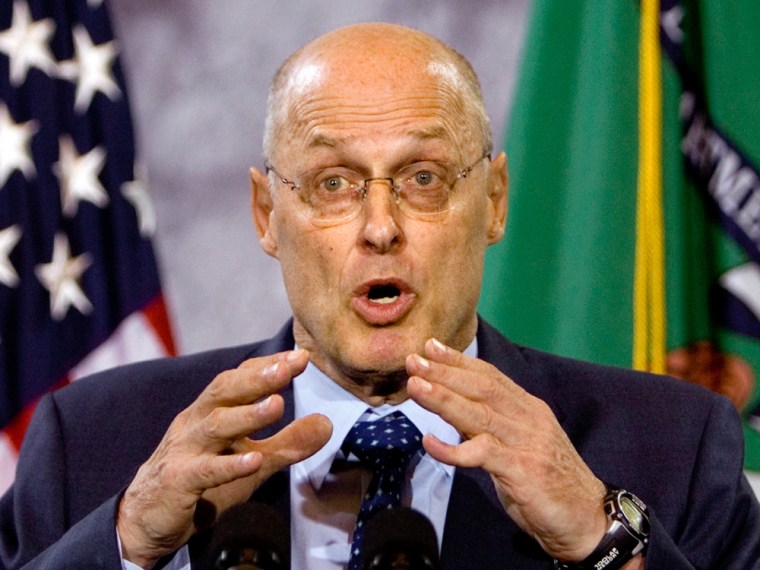The broad regulatory changes proposed by the White House Monday add to an ongoing debate in Washington about what is needed to clean up the mess created by Wall Street’s failure to manage its own risky investments — and keep it from happening again.
With millions of homeowners at risk of losing their homes, Democrats have focused on heading off an expected rise in mortgage defaults — and the resulting losses to investors who bought bonds backed by those now-shaky mortgages. Republicans tend to favor a series of regulatory reforms to streamline the current alphabet soup of agencies created during the Great Depression to rebuild the American dream of homeownership.
Regardless of which approach the government ultimately takes, the most important question is: Can the government can act quickly enough to keep the current credit crunch from spreading? That part of the story is still being written.
The proposal formally spelled out Monday by Treasury Secretary Hank Paulson was widely reported over the weekend. The goals of the reform would be to improve consumer protections, tighten regulation of some business practices and improve stability of the financial markets. To do that, Paulson proposed giving the Federal Reserve broader powers and more information about investments held by Wall Street brokerages and investment firms.
The hope is that by providing the Fed with more authority to step in and limit investment activity that poses a threat to the financial system, the central bank can act to head off bigger problems down the road.
“That authority at current is limited only to where the Fed identifies a potential systemic, downside risk if they do not act," said Richard Baker, CEO of the Managed Funds Association and former member of the House Finance Services Committee. “It's merely saying, 'We see the train coming.' Today, I have to wait for the train to run over me before I can act. Now we’re going to say, ‘I hear the whistle, I see the steam, I smell the smoke: let's do something before it gets here.’ ”

Though many praised the plan as a step in the right direction, critics argued that it fails to address the more immediate problem of a widening credit crunch that began last summer as the pace of mortgage foreclosures began to rise.
Senate Banking Committee Chairman Christopher Dodd said Monday that the administration blueprint "would do little if anything to alleviate the current crisis."
Dodd and House Financial Service Chairman Barney Frank are working on a bill that would expand the government’s role in helping to refinance mortgages written at the height of the lending boom that have now become unsustainable as house prices have fallen. The White House has opposed measures that would “bail out” borrowers losing their home or the investors who bought securities backed by their mortgages.
But supporters of a government role in refinancing bad mortgages say that approach risks causing wider damage to the economy.
“A million more foreclosures are going to continue to exacerbate this problem," said John Taylor, executive director of the National Community Reinvestment Coalition. "The deterioration of the economy driven by this foreclosure crisis is going to force the hand of something pro active. We can’t go to January of '09 before someone comes into office that’s willing to do something about this.”
Since the financial markets began to come unwound last summer, the government’s primary response has come from the Federal Reserve. After a series of fairly tepid interest rate cuts failed to stem the turmoil, policy makers responded with increasing urgency, culminating in a $30 billion pledge to shore up Bear Stearns after a flight of investor capital pushed the firms to the brink of collapse.
The proposals unveiled Monday will likely re-open a debate over whether the Federal Reserve was too slow to use its existing powers to cut interest rates and too lax at regulating the business practices that contributed to the problem in the first place.
“They missed the subprime crisis in August,” said Greg Valliere, chief political strategist at Stanford Financial Group in Washington. "They were the regulators who were supposed to stop all of this predatory lending. This is like putting Eliot Spitzer in charge of the Morals Division."
The plan would also consolidate dozens of state and federal regulators that currently oversee pieces of the banking and investment industries. With so many powerful constituents behind those agencies, the odds are long that Congress will enact a comprehensive reform package this year. Just few months before summer adjournment, a third of the members of the Senate and all of those in the House have already begun to focus on getting re-elected in November.
“There's a need for comprehensive legislation to change the regulatory system in my view, and Congress will have to get down to it," said former SEC Chairman Harvey Pitt. "But that probably won't come until after the election.”
Progress on various legislative solutions has also been slowed by a broad philosophical divide over how to respond to the surge in foreclosures and the resulting market turmoil. Democrats have generally favored government intervention to rework mortgages that are set to jump to unsustainable levels — either as a buyer or insurer of new loans to help homeowners avoid foreclosures. Republicans have generally favored a “hands off” approach and support the idea that, no matter how painful the consequences, people who took on more risk than they could handle — whether home buyers or investors — should have to accept the resulting losses.
Philosophical differences aside, the reforms outline by Paulson Monday would be a daunting task; each of the agencies involved has its own powerful constituency in business and on Capitol Hill.
Paulson's plan is not the first, for example, to propose merging the regulatory role of the Securities and Exchange Commission and the Commodities Futures Trading Commission. As derivatives, like options, have morphed into ever-more complex securities, the regulation of these risky bets has not kept up with expansion of trading volume. But past efforts to combine the two key agencies — each of which regulates different pieces of the market — has been stymied by turf wars. Oversight of the CFTC is the domain of the House and Senate agriculture committees, while the SEC falls under the finance committees of those houses.
"That comes up constantly," said Kenneth Scott, professor of law and business at Stanford University, referring to a SEC/CFTC merger. "I don't see any likelihood of that."
Bank regulation is similarly split among agencies that were created decades ago, and in some cases haven’t evolved as quickly as the industries they’re supposed to regulate. Long after the collapse of the savings and loan industry in the early 1990s and the removal of Depression-era restrictions on interstate banking, regulation is scattered among a patchwork of state and federal agencies. Past efforts to streamline that structure have come up short; it remains to be seen whether the White House will be able to overcome opposition to consolidate or abolish these agencies.
Office of Thrift Supervision Director John Reich has already vowed to oppose Paulson’s proposed changes, calling is just the latest in a series of failed efforts at restructuring over the last 60 years, and one that would meet the same fate. The American Bankers Association has also come out against some Paulson’s proposed changes.
"Dismantling the thrift charter and crippling state banking charters will weaken banking in America," said ABA president and chief executive officer Edward Yingling.
Regardless of the philosophical divide, a further deterioration of the economy will likely put continued pressure on members of Congress on both sides of the aisle. But Monday’s White House proposal may help defect criticism that the government failed to act to contain the financial crisis.
“It gives them some cover politically and globally and shows that, ‘We realize there's a problem. There is a plan out there,’” said Valliere. “We all know Barney Frank and others will change it. But at least Paulson is giving the impression that he's on top of things.”
